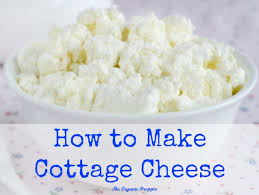
Breaking News
 Is Too Late to Establish a Department of Peace?
Is Too Late to Establish a Department of Peace?
 Making Corporatism Great Again
Making Corporatism Great Again
 Could Trump End Up Triggering The Globalist "Great Reset"?
Could Trump End Up Triggering The Globalist "Great Reset"?
 SUDDEN DROP II : The Great Arizona Haboob of 2025
SUDDEN DROP II : The Great Arizona Haboob of 2025
Top Tech News
 Neuroscientists just found a hidden protein switch in your brain that reverses aging and memory loss
Neuroscientists just found a hidden protein switch in your brain that reverses aging and memory loss
 NVIDIA just announced the T5000 robot brain microprocessor that can power TERMINATORS
NVIDIA just announced the T5000 robot brain microprocessor that can power TERMINATORS
 Two-story family home was 3D-printed in just 18 hours
Two-story family home was 3D-printed in just 18 hours
 This Hypersonic Space Plane Will Fly From London to N.Y.C. in an Hour
This Hypersonic Space Plane Will Fly From London to N.Y.C. in an Hour
 Magnetic Fields Reshape the Movement of Sound Waves in a Stunning Discovery
Magnetic Fields Reshape the Movement of Sound Waves in a Stunning Discovery
 There are studies that have shown that there is a peptide that can completely regenerate nerves
There are studies that have shown that there is a peptide that can completely regenerate nerves
 Swedish startup unveils Starlink alternative - that Musk can't switch off
Swedish startup unveils Starlink alternative - that Musk can't switch off
 Video Games At 30,000 Feet? Starlink's Airline Rollout Is Making It Reality
Video Games At 30,000 Feet? Starlink's Airline Rollout Is Making It Reality
 Grok 4 Vending Machine Win, Stealth Grok 4 coding Leading to Possible AGI with Grok 5
Grok 4 Vending Machine Win, Stealth Grok 4 coding Leading to Possible AGI with Grok 5
How to Make Homemade Cottage Cheese

Cottage cheese is one of those things that has far more ingredients than it should when you buy it at the store. Homemade cottage cheese is creamy, fluffy, and delicious, and it's made with only 3 simple ingredients:
organic milk
white vinegar
salt
To compare, here are the ingredients of a common brand of cottage cheese sold at the grocery store:
Cultured Fat Free Milk, Buttermilk, Nonfat Dry Milk, Cream, Salt, Citric Acid, Lactic Acid, Phosphoric Acid, Natural Flavoring, Guar Gum, Mono and Diglycerides, Xanthan Gum, Carob Bean Gum, Titanium, Dioxide(artificial color), Maltodextrin, Cultured dextrose, Potassium Sorbate, Calcium Chloride, Enzymes
If you want to purchase organic cottage cheese, the ingredients will be better but the price will go up dramatically. But make it at home and the price is far lower. If your milk has just expired, but not turned totally funky, cottage cheese is a good way to use it up.
This recipe is for pasteurized milk from the store. If you are making cottage cheese with raw milk, go here to learn how – the process is different.
Ingredients:
2-1/2 cups of 2% or whole milk
1/4 cup of white vinegar
dash of salt (optional – it's just for flavor)
Tools:
Large heavy bottomed pot
Flour sack towel (I use these in the kitchen constantly!)
Directions:
1.) In a large saucepan bring the milk almost to a boil. You want it to be a minimum of 185 degrees on an instant read thermometer like this one. (It's a small investment, but an important one for making homemade organic dairy products.) As soon as bubbles begin to rise to the top, remove the saucepan from the heat.
2.) Immediately stir in the white vinegar and the salt (if using). You will see the milk begin to curdle immediately.
3.) Allow the mixture to cool completely – about 1 hour at room temperature.
4.) Line a strainer with a flour sack towel, set it in a large bowl, and separate the curds and the whey (hints of Little Miss Muffet!) by pouring your curdled milk into the strainer. Keep the whey for other uses (discussed below).

 HERE COMES THE MOTHERSHIP
HERE COMES THE MOTHERSHIP

